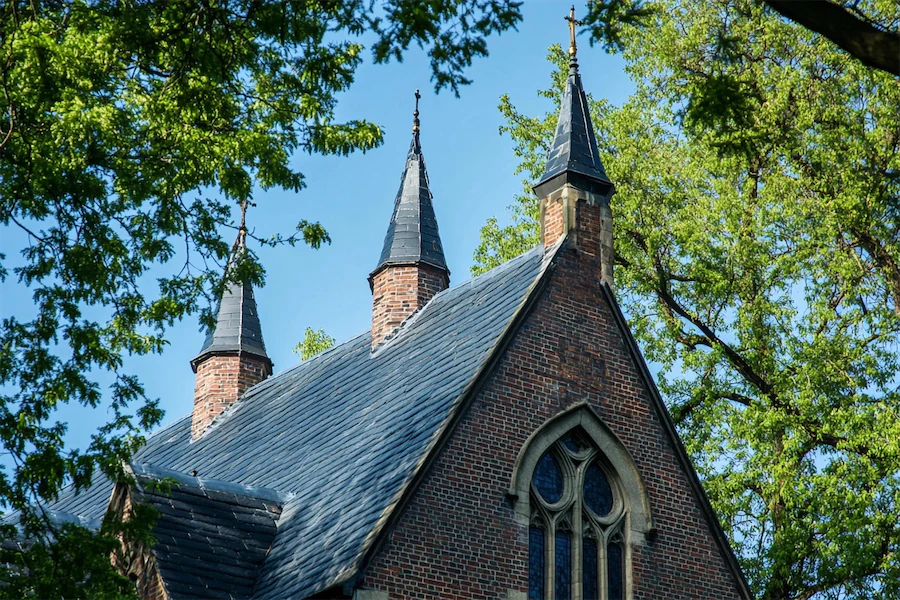Gothic architecture, which flourished in Europe from the mid-12th to the 16th century, introduced innovative roofing techniques that allowed for grand, light-filled structures.
Key Features of Gothic Roofs
- Ribbed Vaults: Gothic architects employed ribbed vaults—intersecting arched ribs that support the roof—to distribute weight more efficiently. This design enabled the construction of taller and more expansive interiors compared to earlier styles.
- Pointed Arches: The use of pointed arches in vaults and windows directed the weight of the roof downwards along specific lines, reducing the need for massive walls and allowing for larger window openings.
- Flying Buttresses: External supports known as flying buttresses countered the lateral forces exerted by the vaulted roofs, channeling them away from the walls and into detached piers. This innovation permitted thinner walls and more extensive use of stained glass.
- Timber Roof Structures: Many Gothic roofs featured intricate timber frameworks, often constructed from oak due to its strength. These wooden structures were typically covered with lead or tiles to protect against the elements.
Notable Examples
- Notre-Dame de Paris: The cathedral’s original roof, known as “la forêt” (the forest), was a complex wooden structure made from ancient oak trees. Following a devastating fire in 2019, restoration efforts have focused on reconstructing this iconic roof using traditional materials and techniques.
- Amiens Cathedral: Renowned for its soaring nave and extensive use of flying buttresses, Amiens Cathedral exemplifies the structural ingenuity of Gothic roof design.
Conclusion
Gothic roofs are a testament to the architectural advancements of the Middle Ages, combining structural innovation with aesthetic grandeur. The development of ribbed vaults, pointed arches, and flying buttresses not only transformed the skyline of medieval Europe but also laid the groundwork for future architectural endeavors.
